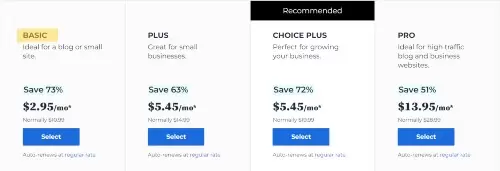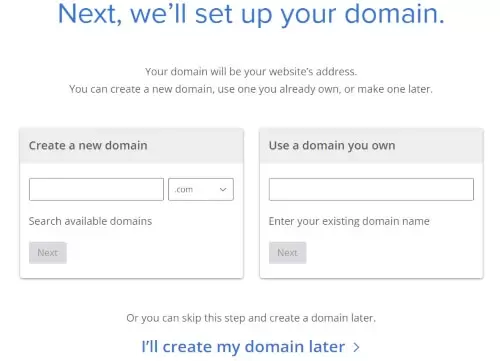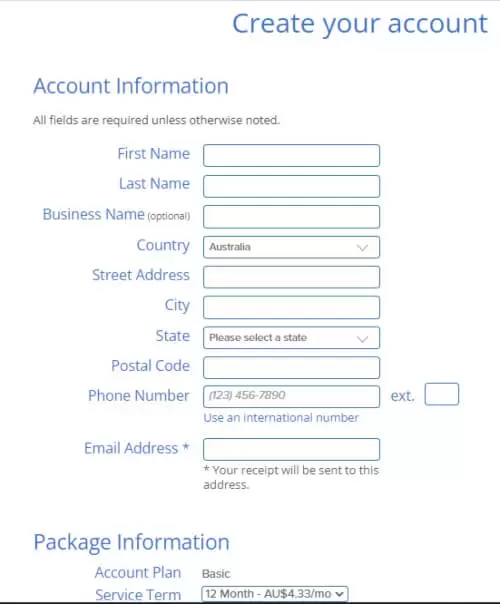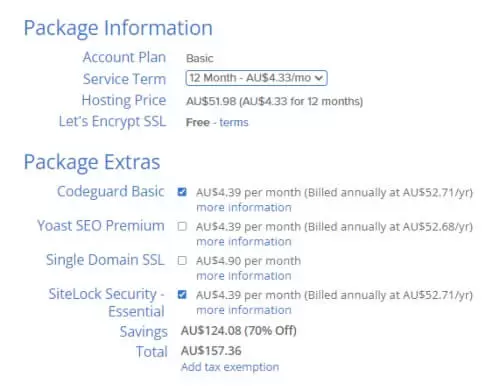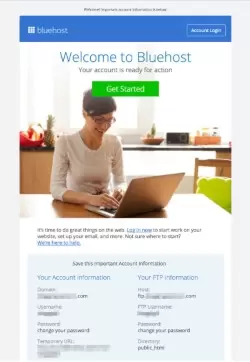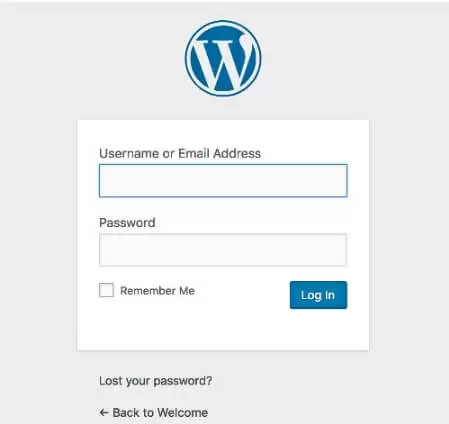
How to Start a Sports Blog And Make Money in 2025 | Step-by-Step
How to Start a Sports Blog And Make Money in 2025 | Step-by-Step
Starting a sports blog can be a challenge, but with this step-by-step guide, you can turn your passion for sports into WIFI money.
But first, let’s take a step back.
The worst thing you can do when starting a sports blog or any blog is to launch it like an amateur.
Like throwing a bunch of content and then sitting back to watch a truckload of traffic come flooding in. Sorry, that’s not how to start a sports blog.
Listen.
Sports blogging is more than that. You need a well-oiled blogging terminator plan loaded with research, sport blog ideas, engaging content, and marketing strategies. The works.
With that said.
If you’re a sports fanatic and you really want to share your views on your favorite teams, players, and games then here’s a no-nonsense step-by-step guide on how to create a sports blog in under an hour.
And transform it into a thriving online platform.
So let’s dive in so you can be a successful sports blogger. (As long as you give it your all.)
How to Start a Sports Blog And Get Paid in 10 Steps

This page have some affiliate links. In other words, if you buy from my links, I may get a commission.
This step-by-step guide is lengthy but packed with the good stuff you need to launch a sports blogging business.
So I suggest you grab your favorite drink and snack.
By the way. I have a blog launch checklist guide posted here
If at any time, you feel confused, you can check out my blog launch checklist guide here.
Or feel free to reach out to me here.
I’ll help you as best I can so you can launch a successful sports blogging career.
1. What’s Your Sports Niche?
To start a sports blog, you must choose a niche that aligns with your interests, knowledge, and expertise.
Buy don’t go broad and cover all things related to sports. Don’t be the ESPN of sports. It’s just too hard for a new sports blogger.
Instead, cover a specific sport to launch your sports blog.
By focusing on a specific area within the broader sports landscape, you can establish yourself as an authority in that space and build a loyal audience that values your insights and opinions.
Choosing a niche for your sports blog has several benefits.
- It’s easier.
- It allows you to differentiate yourself from general sports blogs that cover everything from basketball to golf. By narrowing your focus, you’ll attract a more targeted audience interested in your specific niche.
- It helps you develop your unique voice and perspective on the topics you cover. By focusing on a laser-targeted area, you can offer more in-depth analysis that resonates with your readers.
- It makes it easier to monetize your sports blog by attracting advertisers and sponsors who are interested in your niche audience.

How to become a sports blogger in your niche?
To select the right niche, consider your interests, knowledge, and expertise.
- Ask yourself the following.
- What sports do you follow closely?
- Will you cover the major leagues, college, or a local league?
- What teams and players are you most knowledgeable about?
- What topics and angles do you enjoy writing about?
- Will you cover a sports team or the entire league?
By answering these questions, you’ll be able to narrow down your focus and identify the niche that aligns with your passion and expertise.
And one more thing. It’s a big one. Know who your ideal readers will be. Here’s why.
Knowing your target audience matters because it enables you to tailor your message and approach to connect with and engage them effectively.
By comprehending their demographics, interests, and needs, you can create content that resonates with them and directly addresses their concerns.
When you can deliver what they want, not what you want. You will grab their attention and slowly build trust.
And guess what. With more trust, you can lead your readers to take the next action, such as purchasing a product, signing up for a service, or engaging with your content.
Moreover, understanding your target audience can help in identifying new growth and expansion opportunities by utilizing your insights to develop new products or services that satisfy their needs and desires.
Ultimately, knowing your target audience can enhance the effectiveness of your marketing efforts and facilitate building stronger, more meaningful relationships with your customers.
That said.
- You can start a sports blog by covering a sports team locally. It can be high school, college, or the professional level.
- You can blog about the players in the teams by highlighting their strengths, weaknesses, achievements, upbringing, and more.
- You can blog about the recent rounds of matches and play.
- You can blog about the fitness and nutritional programs used by top-performing individuals.
- You can provide the latest updates on the team, player movements, and the league. A good example is Transfer Tavern.
- You can provide a sports blog (like WhoScored) on stats and analysis.
- You can blog about a team.
- You can blog about the equipment, merchandise, and uniforms.
Here are some popular sports blog ideas to consider:
- Fantasy Sports: If you’re an avid fantasy sports player, consider starting a blog that covers strategy, rankings, and analysis for popular fantasy sports leagues like the NFL, NBA, and MLB.
- Team-Specific Blogs: If you’re a die-hard fan of a particular team, consider starting a blog that covers news, analysis, and opinion pieces about your favorite team.
- Sports Betting: If you’re knowledgeable about sports betting and want to share your insights and strategies, consider starting a blog that covers sports betting tips, trends, and analysis.
(I like to say here that I’m no gambler and I have no idea how betting works. I don’t want to know. But some of you may have some knowledge that can help people who are into sports betting. You do your thing. As always, gamble responsibly.)
- Sports Technology: If you’re interested in the intersection of sports and technology, consider starting a blog that covers sports gadgets, wearables, and data analytics.
By choosing a niche that aligns with your interests and expertise, you can establish yourself as a trusted authority in your space and build a loyal audience of readers who value your insights and opinions.
2. The You.
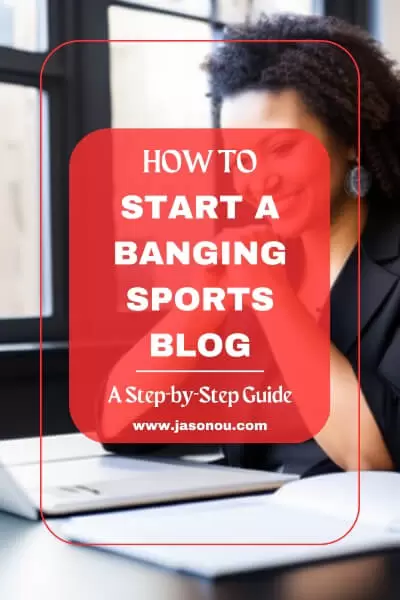
Now that you’ve decided to go all in and make a name for yourself in the blogosphere. This means you need to build a killer brand so you can set yourself apart from other sports bloggers.
However, it’s not just about having a fancy logo or trendy color scheme – it’s about creating a unique identity that resonates with your readers.
Here are 2 strong reasons to establish a strong brand for your very own sports blog:
Building a brand is the key to making a name for yourself in the blogosphere. It’s not just about your logo or color scheme – it’s about the overall image and perception your readers have of your blog.
With a strong brand, you’ll be able to connect with your audience, stand out from other sports bloggers, and attract new readers.
B. Establishing Your Brand Identity
First things first, figure out what makes your blog special.
Define your mission, vision, and values, and figure out who your target audience is. Once you have a clear idea of what makes you unique, start developing your visual brand.
This includes your logo, color scheme, typography, and more.
Make sure your brand is consistent across all your online channels, from your blog to your social media profiles and email campaigns.
Side note: Look. I’m all for the branding and pretty logos, but don’t spend hours on it trying to be perfect. Most likely, it will take some time before your blog gets any decent traffic.
Your time is best spent on creating epic content and then promoting your sports blog so you can drive eyeball traffic to the content soon.
Worry about the fancy stuff later.
3. Leverage You to Attract Readers.
Now that you have your brand identity sorted, it’s time to make it work for you!
But I like to point out that Step 3 is not the next step of launching the blog itself. Confused?
Let me explain.
This step here is prepping you that high-quality content plays a huge part in becoming a successful sports blogger.
When you create high-quality content that aligns with your brand values and your readers, you are positioning yourself as an authority in your niche.
Using your personal brand, you can collaborate with other bloggers and influencers in your space, and engage with your audience on social media and via email.
You need to keep promoting your brand, and your sports blog and establish yourself as a thought leader in your niche to attract new readers and build a loyal following over time.
Do that and you’ll be well on your way to creating an amazing brand for your sports blog. (More on the marketing stuff later.)
So keep this in mind as you learn how to start a sports blog.
Moving on.
4. Sign Up for a Blogging Platform.

So you’ve got your niche and brand identity all sorted out – that’s awesome!
Now it’s time to get on a blogging platform. A blogging platform is basically a tool that lets you create, publish, and manage your blog content.
Which is great.
Also, you have a huge number of blogging platforms to choose from. Some are free, and some are not.
Look. While the free ones sound great and all, it isn’t.
That’s because.
- Free platforms will have their own sponsored ads on your blog.
- You will have less flexibility in the creative design and look of your blog. In other words, you will look unprofessional.
- You will have less room to grow your sports blog, and or any blog.
- Worse still, you don’t own your sports blog.
I don’t want to spout on too much, but if you want to be a successful sports blogger then you need to invest in a platform that will allow you to grow.
And when you invest in something, you’re investing in a business. This is why starting a sports blog for money is all about. Right?
So what’s the best place to start a sports blog?
I recommend using WordPress (the dot org one).
You have the flexibility to customize your sports blog and do loads more with it.
Although there are a bunch of options out there, I reckon WordPress is the bee’s knees for starting a sports blog. Here’s why:
A. Why Use a Blogging Platform?
Using a blogging platform has loads of benefits, including:
Ease of use: Most blogging platforms are super user-friendly, even if you’re a total newbie.
Customization: Many blogging platforms offer different templates and design options, so you can make your blog look exactly how you want it.
Scalability: Blogging platforms are designed to handle a ton of content, so it’s easy to grow your blog over time.
B. Why WordPress is the Best Platform for Sports Blogs
WordPress is the most popular blogging platform in the world, powering over 40% of all websites on the internet. There are heaps of reasons why we think WordPress is the way to go for your sports blog:
- Easy-peasy: WordPress is so easy to use, even if you’re new to blogging. You can create and publish posts in a jiffy thanks to its user-friendly interface.
- Make it your own: With thousands of templates and design options available, you can give your sports blog a unique look and feel that’s all yours.
- Search engine-friendly: WordPress is built to be SEO-friendly, so it can help your blog rank higher in search engine results pages (SERPs).
C. Stats to Back Up WordPress

According to Technorati, 48% of the top 100 blogs are WordPress.
Here are some more stats that show why WordPress is the real deal for your sports blog:
- A staggering 43% of all websites living on the internet are powered by WordPress.
- Over 60 million websites use WordPress.
- 62% of the top 100 fastest-growing companies in the US (Inc. 5000) use WordPress. Techjury
By using WordPress for your sports blog, you can make the most of its ease of use, customization options, and SEO-friendly features to create a blog that looks great and draws in readers, all while building your brand over time.
5. Setting Up Your Sports Blog.

Well, well, well! You’re on your way to setting up your very own blog. Congrats! Let’s dive into the nitty-gritty of what you need to do:
A. Snag a Domain Name
First things first, you need to score yourself a domain name – this is the web address people will use to find your blog. Make it snappy, memorable, and aligned with your niche or brand. Don’t worry, you can register your domain name with a domain registrar like Namecheap or GoDaddy.
B. Pick a Hosting Provider
Next up, you gotta choose a hosting provider for your blog.
This is the company that’ll store your blog’s files and makes ’em accessible online.
Our top pick? Bluehost.
It’s budget-friendly, dependable, and super newbie-friendly, which makes it an ideal choice for folks who are new to this game. and it has a one-click WordPress installation.
That’s right, you can create a sports blog on WordPress in one click! (More on that in a moment.)
Better still, it has a fast loading speed and very high up-time and for new customers, you get a free domain name in the first year and a free SSL.
You can check out Bluehost here.
C. Install WordPress
Once you’ve got your domain name and hosting all setup, it’s time to install WordPress on your blog.
But don’t sweat it – it’s a piece of cake and can be done via your hosting provider’s control panel.
Once WordPress is installed, you can log in to your blog’s dashboard and start playing around with the design and settings.
Setting up a blog is a major milestone, and it’s gonna be a game-changer for you as a sports blogger.
By grabbing a domain name, selecting a hosting provider, and installing WordPress, you’ll be well on your way to creating a blog that’s not only visually stunning but also full of juicy content that’ll keep your readers coming back for more.
Reminder – you can easily start a WordPress sports blog on Bluehost in one click. More on this next!
How to Create a Sports Blog With Bluehost in 7 Steps.

Here’s a simple step-by-step guide on how to start a sports blog on Bluehost.
Step 1:
Sign up for Bluehost, head over to their website here, and select a hosting plan that suits your needs and budget.
For rookie sports bloggers, I suggest the ‘Basic’ or ‘Plus’ plan.
The Basic plan itself is cheap, starting at $2.95 a month.
You get 10G of space, 1 FREE domain name (first year only), a FREE SSL, a FREE CDN, customer themes, and a one-click WordPress installation.
You can always upgrade to a bigger plan later.
Step 2:
Once you select a plan, you’ll be taken to a page to set up your domain name – this is the web address people will use to find your blog.
If you haven’t decided on one, you can always come back to finalize a domain name.
Real quick on the domain name.
I suggest coming up with a name that is not too specific, like englishroses.com.
Not only is it too super specific, but you’ll also find it very hard to come up with consistent content over time. So go broad with the choice of a domain name. Or use your name as the brand.
You see. When it is a broad domain name, it gives you the flexibility to pivot into other areas of the sports niche, should your first plan goes pear shape.
Bluehost offers a free domain name for the first year, so take advantage of this offer if you don’t already have one.
Step 3:
On the next page is the account information. Go ahead and fill in the details.
Then the next bit is to choose the “Package Extras”. This is optional.
But for more privacy, you can opt for a Domain Name + Protection offer. This just gives you a layer of protection where your name is not tied to your domain name.
When you get to the “Package Information”, you have the choice to opt for a 12-month or 36-month plan. I suggest going for the 12-month plan.
Step 4:
After you’ve filled in the Payment Information and clicked submit, you’ll get a welcome message from Bluehost.
So click on the Get Started button to enter your password (make it complicated).
And when you have completed that part, you’re ready to start a sports blog.
Step 5:
Next, choose a theme for your blog – the design and layout of your website. Thousands of free and paid themes are available, so find one that fits your style and content. (You can start with the FREE option first.)
Preview and customize different themes to find the perfect one for you.
Step 6:
Log in to your Bluehost account, go to the “website” section, and click on the “install WordPress” button. Follow the prompts and you’ll be done in no time!
Customize your site by adding pages, creating menus, and adding widgets to make it more engaging. WordPress has an intuitive interface that makes it easy to do all of this.
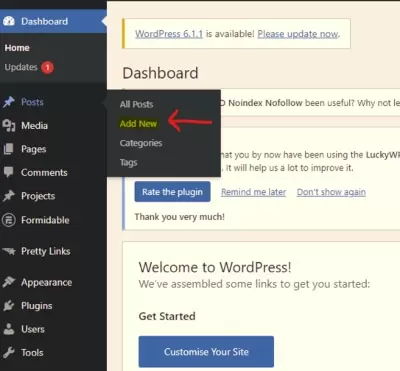
Step 7:
Finally, start creating content! To create your first post, go to the “posts” section of your WordPress dashboard, click on “add new,” and start writing. Format your post with headings, images, and more. And make sure you apply the best SEO practices for blogging. (More on that below.)
Once you’re happy with your post, hit the “publish” button, and it will go live on your blog!
Congratulations, you’re now the proud owner of a WordPress blog on Bluehost!
Can you see how creating a sports blog on Bluehost is super easy?
Of course, there’s a lot more you can do to customize your blog and make it your own, but these steps will give you a great starting point.
So start creating content and share your thoughts with the world!
5. Designing Your Sports Blog.

Great work on setting up your blog! Now it’s time to give it some pizazz and attract readers like a moth to a flame.
A well-designed blog can make all the difference in building a loyal audience. It’s like creating a trendy hotspot where people can come to unwind. So let’s get started!
A. Choose a Killer Template
First and foremost, you gotta pick a template that’s just right for you. It’s like picking an outfit for a night out on the town.
Fortunately, WordPress has got you covered with tons of free and paid templates that can personalize your blog’s design.
Make sure to select a template that matches your brand identity and niche. You want something that looks great and is easy to navigate.
But, like all “FREE” stuff, it is limited. If you want more customization and flexibility, a premium theme like Elegant Themes comes in really handy.
Not only can you create a sports blog design of your taste, but you will also get fantastic customer support.
B. Add Your Personal Flair
Now it’s time to put your own spin on the template!
Think of it as accessorizing your outfit to express your unique style. This involves adding your own logo, selecting colors that complement your vibe, choosing fonts that are easy on the eyes, and tweaking the layout and design elements of your blog.
You can use WordPress’s customization tools or enlist the help of a web designer to create a custom design that’s tailored to your blog.
C. The Must-Have Pages

Home Page: This is like the front porch of your blog. It should give readers a sneak peek of what they can expect to find on your blog.
About Us Page: This should dish on who you are, where you’re from, and why you’re passionate about your niche.
Privacy Policy: This page should explain how you collect and use your readers’ data and what measures you take to protect their privacy.
Terms of Use: This page should spell out the rules for using your blog, like what’s cool and what’s not.
(By the way, if you need a legal template to get your Privacy Policy and Terms of Use nailed down, check out these easy-to-use ready-made templates.)
Contact Us Page: This particular page should make it simple for readers to get in touch with you. Maybe they want to give you some feedback or ask you a question.
And guess what, you can do all this with Elegant Themes and add your personal touch and brand to your sports blog design.
By customizing your template and creating these essential pages, you’ll have a blog that’s visually stunning and user-friendly.
It’ll be a place where people want to hang out and keep coming back for more. So let your creativity run wild and make your blog shine brighter than a diamond!
6. Installing Plugins

Whoop whoop, let’s talk about plugins!
They’re like little wizards that can help your blog perform miracles and be super cool.
With WordPress, there are thousands of plugins at your fingertips, and sports bloggers, listen up – there are some that you won’t want to miss. Check out everything you need to know to get started:
A. Why Plugins Are The Bee’s Knees
Plugins are a real game-changer, providing benefits such as:
Expanded functionality: Plugins can add a ton of features to your blog, such as those trendy social media buttons or some wicked fancy contact forms.
Improved performance: Plugins can speed up your blog’s loading times, keeping your readers engaged and happy.
Personalization: Plugins can help you to customize your blog’s design and layout, making it stand out from the crowd.
B. Essential Plugins for Sports Bloggers
If you’re a sports blogger, you need these plugins in your life:
WpRocket: This plugin is like a superhero, speeding up your blog’s performance, helping you climb the search engine rankings, and keeping your readers from bouncing away.
Updraft Plus: This plugin saves your blog’s files automatically, saving your bacon if anything goes wrong. Phew!
OptinMonster: This plugin lets you create pop-up forms that invite your readers to join your email list and join your sports-loving community.
And more.
Here’s a list of other top WordPress plugins you can use when starting a sports blog.
C. How to Install Plugins on Your Blog
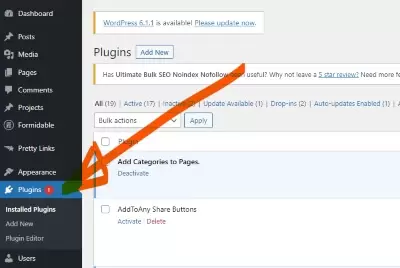
Installing plugins is a breeze and can be done via your WordPress dashboard. Just find the plugin you want, click “Install,” and activate it once it’s done.
Be sure to only use plugins from legit sources to avoid any potential hiccups.
With plugins, you can turn your sports blog into a real gem, providing your readers with a top-notch experience. So, give it a whirl, test out some plugins, and have a blast making your sports blog the best it can be!
7. It’s The Plan.

“Content is what the search engines use to fulfill user intent.” – Jes Scholz, Technical SEO Analyst at DeepCrawl
This is the real deal now.
Let’s get down to business and talk about the meat and potatoes of your blog – the content!
It’s what’s going to reel in your readers and keep them coming back for more. So, what’s the deal?
How do you create great content that engages and informs your audience? Here’s what you need to know:
First things first, let’s talk about keyword research. Yeah, I know, it sounds pretty dry, but trust me – it’s crucial.
By identifying the topics and keywords your readers are searching for, you can optimize your content for search engines and get more eyes on your blog. And who doesn’t want that?
But make sure you stay away from broad keywords (topics) like sports, soccer, basketball, etc. It’s way too competitive.
Instead, go after keywords that are low-hanging fruit because you want quick wins. (like south carolina women’s basketball
yale basketball, etc).
Although these low-hanging fruit keywords have less traffic, it’s less competitive. This means you have a higher chance of getting your sports blog read and seen.
Again. Who doesn’t want that?
Now, if you want to consistently produce killer content, you need a plan. A content plan, that is.
This should include the topics and keywords you want to tackle, as well as a schedule for when you’ll publish new posts.
Speaking of which.
Here are 4 FREE Ways to Generate Sports Blogging Ideas
As a blogger, generating new and engaging sport blog ideas is key to keeping your readers interested and growing your audience.
But sometimes it can be hard to come up with fresh ideas on your own. Luckily, there are several FREE tools and resources available to help you generate ideas to start a sports blog.
So let me show you how to start a sports blog with these four tools now.

1. First up is Google Keyword Planner.
It’s a free tool that can help you find relevant keywords for your blog. With it, you can see the search volume and competition for specific keywords in your niche. (You can even find potential keywords by spying on your competition.)
This will help you decide which topics to focus on based on how popular certain keywords are.

Example: If you have a fitness blog and want to write about weight loss, you can use Google Keyword Planner to see which related keywords have high search volume, such as “best weight loss tips,” “fast weight loss,” “How to lose weight and keep it off” “or “how to lose weight quickly.”
Of course, the idea here is to find keywords (the low-hanging fruit ones) that are not too competitive and have good search volume.
2. Next up is Google Search. This is one of the simplest ways to generate ideas for your blog is by doing a Google search on your topic or niche.
Pay attention to the autocomplete suggestions that appear as you type your search query, as these can give you an idea of what people are searching for.
Additionally, scroll down to the bottom of the search results page to see the “Searches related to…” section, which can provide you with even more ideas.

Example: If you run a food blog and search for “easy dinner recipes,” some of the autocomplete suggestions include “easy dinner recipes for two,” and more.
Also, you can use modifiers like what, when, where, is, what does, best, and top to expand your search. Refer to this sports blogging seacr below.
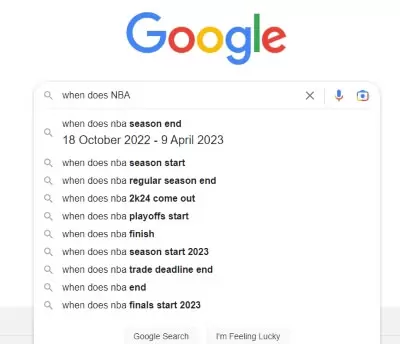
3. A third cool feature of Google that can help you generate blog ideas is the “People Also Asked” section.
It appears in the search results and provides related questions to the query that people frequently ask. You can use these questions as inspiration for your blog content.
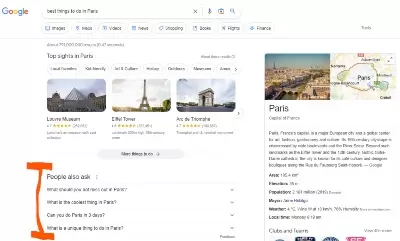
Example: If you run a travel blog and Google search using the terms “best things to do in Paris,” you’ll find under the “People Also Asked” section the following useful questions you can answer. “What should I not miss in Paris?” and “What is the coolest thing in Paria?”. Why not plug in some of your sports blogging ideas to find some great topics to discuss?
4. Lucky last, Amazon. You can browse through books in your niche and read the table of contents or chapter headings to see what topics are covered.
Another great source of sports blogging ideas includes reading customer reviews for any gaps or angles you can fill.
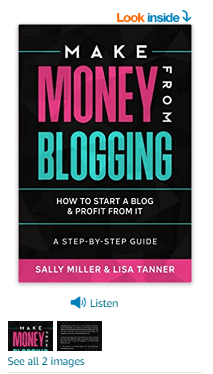
Example: If you run a blog on helping content creators to start a blog, you can browse through the best-selling blogging books on Amazon, and check out the ‘Look Inside’ feature of each book for blogging ideas.
Try it and you’ll see some nuggets in there to write a sports blog.
These are just some of the ideas. So why not give it a whirl to kickstart your creative mojo as a sports blogger?
Remember, consistency is key when it comes to building a successful blog. So don’t flake out on your plan!
When it comes to actually writing your posts, you have to apply the best practices for sports blogging.
8. Here’s How to Write a Sports Blog Post.

Remember step 3? You know the one about putting your audience first by focusing on quality content that helps your readers.
This leads us to the pointy end of actually writing a sports blog.
First and foremost, write attention-grabbing headlines that accurately reflect the content of your post. No reader wants to click on a boring or misleading title – that’s a surefire way to turn readers off.
Next up, break up your content into bite-sized paragraphs with subheadings to make it easy on your readers’ eyes.
And write an introduction that will draw your readers in.
And, of course, include plenty of visuals like images and videos to add some pizazz to your posts.
(Real quick. Label your image file name using the main keywords and other related keywords. For example, take this post as an example, my main keyword is how to start a sports blog. Instead of some alphanumeric numbers like 34gg3432fc6676.jpg, I would name the image how-to-start-a-sports-blog.jpg.)
Last but not least, write like you’re talking to a friend. You want your readers to feel like they’re part of a community, so keep that conversational tone going strong.
By creating high-quality content that speaks to your reader’s interests, you’ll establish yourself as a bonafide authority in your niche.
So, what are you waiting for? Get cracking on that content plan and start writing your sports blog!

Here are a couple more tips to optimize your Sports Blog.
When you create a sports blog that your readers will enjoy, you have to make sure to get traffic to your blog from the search engines.
So how do you do this? It’s actually no biggie.
All you gotta do is optimize each page of your blog so that it reflects what readers would type into Google when searching for info on that topic.
This way, you’ll help Google understand what your page is all about and rank it accordingly in search results.
Here are six more key SEO pointers for your sports blog:
- A key element of on-page optimization is your SEO title tag. This is the title that appears in search engine results and lures people to click on your blog. To make sure it’s relevant to the article, use the main keywords that you’re targeting. But keep in mind that search engines will truncate it to around 160 characters, so be brief and straightforward.
- A crucial on-page SEO factor is your meta description. This is the text snippet that appears beneath your blog post in Google search results. Make sure to create a compelling meta description that accurately depicts what readers can expect from your blog. That way, you’ll have complete control over what Google thinks your post is all about.
- Add internal links that will direct readers to other blog posts within your sports blog. This helps keep your readers longer on the blog.
- Throw in a few external links that will serve as resources readers may find useful.
- Optimize your blog URL: before you publish your post, be sure to add the main keyword as the URL. For example, instead of your-domain-name.com/post-id, you configure it as your-domain-name.com/your-main-keyword
- Nail down your blog post format is vital for ranking high on search engines. Make sure your target keywords appear in the H1 (title), the first H2 as a question, the introduction, and throughout the content.
Follow these tips and you’ll improve your on-page SEO and elevate your rankings on Google.
9. Your Sports Blog Needs To Be Read.

“The best source of a link is a website that is both considered authoritative and relevant to your website.” – Helen Pollitt, Lead SEO at Arrows Up
Alright, you’ve poured your heart and soul into creating killer content for your sports blog. Now what?
It’s time to get your sports blog there and start promoting it, my friend!
Without any promotion, it’s like throwing a party and no one shows up.
So, let’s talk about some effective strategies for getting the word out:
First and foremost, let’s talk about the importance of promotion.
You can have the best darn blog in the world, but if no one knows about it, what’s the point?
By promoting your content, you can attract new readers, build your brand, and establish yourself as a valuable resource in your niche.
So, how do you go about promoting your sports blog?
Here are some tried-and-true strategies to consider:
Pinterest Marketing: This is a search engine that can help drive some serious traffic to your sports blog.
What you need to do here is.
- Start a Pinterest Business Account.
- Knuckle down on your keyword research using Pinterest search.
- Create keyword-rich boards (and board descriptions).
- Whip up some eye-catching graphics using a 2:3 aspect image ratio for your Pins.
- Add eye-catching text that is click-worthy.
- SEO your pin titles and descriptions
- Share your pins on Pinterest and point them to your sports blog.
If you want a step-by-step course on how to start a sports blog on Pinterest and attract high-quality traffic to your blog, I recommend you check out this course here.

Guest Blogging: Reach out to other sports blogs in your niche and offer to write a guest post for them. This can help you expand your reach and establish yourself as an expert in your field.
Email Marketing: Create an email list and send out regular newsletters to your subscribers with links to your latest blog posts. This can help you build a loyal following and increase engagement with your readers.
Social Media: Pick one social media platform to focus on and become a master of it. When you pour your energy into one platform, you’ll get really good at it and attract your ideal audience. Once you’ve conquered one platform, you can branch out to others.
Quora and Forums: Participate in online forums and Q&A sites like Quora to answer questions related to your niche and share links to your blog posts.
Link Building Strategies: You can get back-links from broken link building, link reclamation, link partnerships, and guest post link trading.
And more.
Now, let’s talk about some best practices for successful promotion.
To make the most of your promotion efforts, keep these tips in mind:
Consistency is key: Promote your blog and engage with your readers regularly to build a loyal following over time.
Quality over quantity: Focus on producing high-quality content and promoting it effectively, rather than trying to churn out as much content as possible.
Personalize your efforts: Tailor your promotion efforts to the interests of your audience. For example, customize your email newsletters to suit the preferences of your subscribers.
By promoting your sports blog effectively, you can attract a bigger readership, build your brand, and establish yourself as a go-to authority in your field.
So don’t be shy – get out there and start promoting your sports blog!
10. Sports Blogging Wifi Money.

By this point, you have an awesome WordPress blog, you’re generating traffic, and you might be wondering how you can make some cash from it.
Well, fret not my friend, because I’ve got some tips for you on how to start a sports blog and make money:
A. Get that Money, Honey: Ways to Monetize Your Sports Blog
Advertising: You can slap some ads on your blog using programs like Google AdSense or work directly with advertisers. This can bring in a steady flow of cash to your blog.
Affiliate Marketing: By promoting products and services that are relevant to your niche, you can earn a commission on any sales made through your unique affiliate link. Cha-ching!
Sponsored Content: Brands are always looking for ways to promote their products or services. You can work with them to create sponsored content that aligns with your niche and promotes your brand.
Digital Products: Create and sell digital products like ebooks, courses, or webinars related to your niche. People are always willing to shell out some dough for quality information.
That’s just the tip of the iceberg. You can check out this article on how bloggers make money blogging from home I posted not so long ago.
B. Making that Money Grow

To maximize your earnings, you’ll need to focus on growing your readership and building a loyal following.
This can be achieved by consistently producing high-quality content, promoting your blog effectively, and engaging with your readers.
After all, the more people you can reach, the more opportunities you have to make some serious moolah.
Now that’s how to start a sports blog and get paid.
C. Don’t Mess it Up

When it comes to monetizing your sports blog, there are some common mistakes that you should avoid. These include:
Stuffing your blog with too many ads or sponsored content, can turn off readers and damage your brand.
Promoting products or services that don’t align with your niche or that you don’t genuinely believe in. Your readers will see right through that, and it can hurt your credibility.
Focusing solely on making money and neglecting the quality of your content or engagement with your readers.
Remember, you started this blog because you’re passionate about sports. Keep that passion alive and let the money come naturally.
By monetizing your sports blog effectively, you can turn your passion into a profitable business and establish yourself as a leader in your niche.
So, go ahead and explore these different monetization options to find what works best for you and your blog.
It’s time to make some money moves!
11. Email Your Sports Blog Fans.

Because those email addresses you will be collecting and growing will be your most avid readers.
And having an email list of the best subscribers allows you to communicate with them whenever you want.
But. I would suggest you worry about growing your email list when you have the first nine steps sorted and settled.
I only say this because as a rookie blogger, your time and energy will be consumed with content creation and promotional stuff.
Plus the headaches that come with starting a sports blog.
That is the reality.
Build an email list when you see traffic coming in (or as soon as you can). Again, building a list of your best sports blogging fans is a must-have.
A Summary of How to Start a Sports Blog 2025
Great job! You now have the knowledge you need to transform your sports blog into a top-notch online platform that people will love to read.
So, let’s recap what we’ve learned on starting a sports blog:
First and foremost, finding a niche is crucial to attracting a specific audience and giving your blog a unique identity.
Creating a strong brand is essential to standing out from the crowd and establishing your blog’s reputation.
Using a blogging platform like WordPress can save you a lot of trouble and make your life easier.
But you’ll need a high-quality web host like Bluehost.
It will give you a fast loading speed, a very high uptime, and a simple WordPress install. (Now that’s how to start a sports blog in a click!)
Creating a sports blog with a customizable template and essential pages can give your blog a professional and polished look.
Installing the best WordPress plugins can help boost your blog’s functionality and performance, so don’t forget to do that.
Planning and creating high-quality content is the key to attracting and retaining readers. Remember, quality over quantity!
Promoting your sports blog is crucial to building a readership.
Make sure to utilize all the effective link-building strategies we’ve covered, such as Pinterest marketing, guest blogging, email marketing, social media, and forums.
Last but certainly not least, monetizing your sports blog can help turn your passion into a profitable business.
There are tons of ways to do this, including advertising, affiliate marketing, sponsored content, and digital products.
Building a successful sports blog takes time and effort, but armed with the knowledge you’ve gained from this guide, you’re well on your way to achieving your goals.
So keep creating amazing content, promoting your sports blog, and monetizing it to reach your full sports blogging potential.
Over to you now to start creating a sports website in 2025.
Disclosure: This post may contain affiliate links, which means I’ll receive a commission if you purchase through my links, at no extra cost to you. Please read full disclosure for more information.
You Might Want to Check This Out Too
Resources To Grow Your Business With
Bluehost
Bluehost is a great starting point for beginners or bloggers who want to switch to a reliable web hosting service. And it gives you the best bang for your buck - starting at $2.95 a month*.
With the entry-level hosting plan, you'll get a high up-time, reliable customer support, FREE domain name (first year) and 30 day money back guarantee.
You can sign up with Bluehost here.
WPX Hosting
It's a web-hosting service I love using. It specializes in WordPress hosting, and depending on what package you opt for, you can host 5 or more sites on one account. The best bit is - the quick turnaround in support is top notch.
For bloggers who have an established blog, this is a fantastic option.
You can learn more about this service here.
Aweber
Building an email list of a growing audience is essential for the longevity of any business. This autoresponder service is easy to use, and it is a great starting point for someone looking to kickstart their email campaign.

Hi, I’m Jason Ou (surname aka, Oh). I am a Solopreneur and Blogger. My mission is to help fellow entrepreneurs (like you) to profit from their passion online. Let’s connect on Facebook now.

